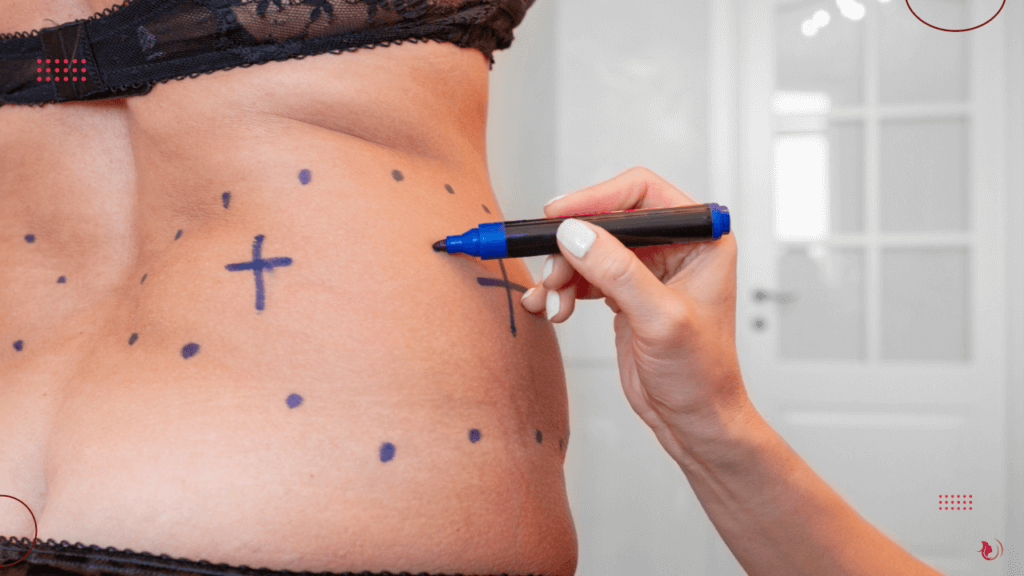Liposuction has been a pivotal cosmetic procedure in body sculpting for several decades. Its evolution, particularly with the advent of VASER (Vibration Amplification of Sound Energy at Resonance) technology, marks a significant leap in cosmetic surgery, offering a safer, more precise, and more effective method for fat removal.
Traditional Liposuction: A Glimpse into the Past
Initially introduced in the 1970s, traditional liposuction involved manual suction of fat through a cannula. This method, while effective, often resulted in trauma to surrounding tissues, extended recovery periods, and uneven results. Over the years, these limitations were addressed with various innovations, refining the liposuction experience.
Early Developments & Challenges
Initially, liposuction began as a closed technique. German physician Schrudde first published his method using a uterine curette for subcutaneous fat removal. However, this method, and those of other surgeons like Kesselring and Meyer, who combined it with aspiration, faced complications such as persistent lymphorrhea and skin necrosis, leading to a negative perception of the procedure.
In the late 1970s, Professor Yves-Gerard Illouz introduced a groundbreaking, safer method of liposuction, popularly known as the “wet technique.” This involved the preoperative injection of local anaesthesia, saline, adrenaline, and hyaluronidase, significantly reducing blood loss and preserving neurovascular structures. This technique, alongside the development of a blunt cannula, became the global standard for liposuction, mitigating the severe complications previously associated with the procedure.
Evolution of Techniques and Instruments
Over the years, various sizes of blunt-tipped cannulas were developed for different body areas, and advancements in the wet technique (hydrotomy) further refined the procedure. This evolution allowed for less invasive surgery, reduced bleeding, and improved fat layer targeting. Additionally, the combination of surgical recontouring procedures with liposuction, such as alipoabdominoplasty and lipoinnerthighplasties, expanded the scope of body contouring.
Introduction of Ultrasound-Assisted Liposuction (UAL)
In the late 1990s, UAL, which uses mechanical vibrations to break down fat, emerged. Despite its initial popularity, UAL faced challenges due to thermal effects causing severe complications. This led to the development of safer techniques like VASER, a ‘cold’ ultrasonic approach.
VASER Liposuction: A Modern Revolution

The early 2000s saw the introduction of VASER liposuction, a transformative step in the field. Utilizing ultrasonic technology, this method breaks down fat cells before removal, minimizing damage to surrounding tissues. The procedure begins with the infusion of a tumescent solution, numbing the targeted area and aiding fat removal.
How VASER Liposuction Works
Cavitation: The Core of VASER Technology
VASER liposuction operates on the principle of cavitation. It employs ultrasound waves to convert solid fat cell clusters into liquid single cells, facilitating easier and more efficient removal. This technology leads to increased fat harvest yields and allows for more efficient procedures.
The VASER liposuction process begins by injecting a saline solution mixed with anaesthetic into the target area, numbing it and shrinking blood vessels to reduce post-operative bruising and swelling. This is followed by inserting small probes through tiny incisions, which emit ultrasound energy. This energy creates frictional heat within the fatty tissues, resulting in their liquefaction or emulsification, making fat cells easier to extract.
Precision in Targeting, Contouring & Skin Tightening
VASER’s precision is paramount when treating specific regions like the abdomen or thighs. It targets only the unwanted fatty tissue, sparing the blood vessels and reducing trauma and recovery time. This precision allows for treating multiple areas in one session and results in visible improvements as early as one-week post-procedure due to minimal swelling and inflammation.
Apart from removing fat, VASER liposuction stimulates collagen production due to the heat generated by ultrasound waves. This increase in collagen tightens loose skin in the treated area, reducing the sagging often associated with conventional procedures, thus offering dual benefits of refined body sculpting and improved skin elasticity.
Minimally Invasive Nature & Quick Recovery
The minimally invasive nature of VASER liposuction significantly reduces recovery time. Liquefying fat cells before extraction, minimizes trauma to surrounding tissues, leading to quicker healing and less downtime. VASER liposuction is ideal for those within 15 pounds of their ideal weight, seeking targeted reduction of stubborn fatty areas without the need for extensive post-operative care.
Key Advantages of VASER Liposuction

- Precision and Even Results: VASER liposuction ensures a more precise fat removal process, reducing the likelihood of uneven contours and promoting smoother, natural-looking results.
- Reduced Downtime: The gentler nature of VASER technology leads to decreased trauma, resulting in quicker recovery.
- Skin Tightening: It breaks down fat and stimulates collagen production, improving skin elasticity.
- Versatility: VASER can be applied to various body areas, enhancing its efficacy across different body contouring goals.
Patient Satisfaction and Outcomes
Studies indicate high satisfaction rates among patients undergoing VASER liposuction. The reduced discomfort, quick recovery, and precision of fat removal, coupled with skin tightening benefits, have made VASER a preferred choice for those seeking body contouring solutions. There are many reputable clinics in London offering Vaser including the 111 Harley St. clinic, the EA Clinic also in Harley Street and Beverley Clinic in Edgware.
Considerations & Safety in VASER Liposuction
While VASER has numerous benefits, it’s essential to understand potential risks. Ideal candidates are those with localized excess fat and good skin elasticity. Complications, such as infection or contour irregularities, are relatively low but possible. Therefore, selecting a skilled and experienced surgeon and adhering to safety protocols is crucial for optimal outcomes and minimizing risks.
VASER liposuction represents a significant advancement in cosmetic surgery, offering a safer and more effective alternative to traditional methods. Its precision, reduced downtime, and versatile applications mark it as a modern solution for those seeking refined body sculpting techniques.



1 Comment
Vaser seems to be a much safer way to reduce fat than lipo. The ability to reduce fat in tight areas without leaving tissue damages definitely makes the end result look better.